Top 5 Most Beautiful Historical Sites in Lebanon
The Phoenician ports of Tyre, Sidon, and Byblos, as well as the rest of Lebanon's coastal region, are home to some of the world's oldest human communities. In ... read more...the third millennium B.C., these were all dominant centers of trade and culture, and Lebanon was one of the busiest cultural hubs in the Middle East for a long time. Lebanon is unique in that it has many cultural commonalities with the rest of the Arab world while still having distinct traits. Political dissidents, as well as marginalized religious and ethnic groups, have sought refuge in its rocky, hilly environment in the past. The modern state was founded in 1920, and it became a republic in 1926 before gaining independence in 1943. As a result, the country is home to a plethora of remarkable historic landmarks that provide insight into the country's rich history and dynamic present. Here are the most beautiful historical sites in Lebanon.
-
The greatest Roman temple ever built, as well as a variety of other remarkable historical structures, may be seen at Baalbek, a large and impressive Roman site in Lebanon. The site was designated as a UNESCO World Heritage Site in 1984.
Prior to the Greek takeover of Syria, little is known about Baalbek. Baalbek was once a Phoenician colony dedicated to the worship of the sun god Baal, but the Greeks renamed it Heliopolis (City of the Sun) in the 4th century BC. Baalbek became part of the Diadochi kingdoms of Egypt and Syria when Alexander the Great conquered Persia in the 330s BC. It was then taken over by Egypt's Ptolemaic dynasty, who renamed the town Heliopolis.
It was during the Roman era that Baalbek flourished, eventually being annexed and therefore becoming a Roman province under Julius Caesar in 47BC. The Romans would endow Baalbek with the empire's largest holy temples during the next two centuries. It would be home to the massive temples of Jupiter, Venus, and Bacchus by 150AD. The ruins of Baalbek were first discovered by Europeans in the 16th century. Despite the fact that much of the area had been devastated by earthquakes, a German expedition excavated the two Roman temples and began to restore the ruins between 1898 and 1903.
From the early twentieth century, the city was governed by successive Syrian Muslim monarchs. Following World War I, the French mandated powers in Lebanon included Baalbek. Reconstruction stalled until the conclusion of the civil war in Lebanon, with preservation and subsequent tourism picking up in the 1990s.
Visitors to Baalbek today can observe the imposing ruins of the once-impressive structures. This involves standing in the shadow of six of the Temple of Jupiter's original 54 columns, the Empire's greatest temple ever constructed. Baalbek is also home to the remarkably well-preserved Temple of Bacchus, the Temple of Mercury's stairwell, and the propylaea, a ceremonial entranceway.
Location: Baalbek, Lebanon
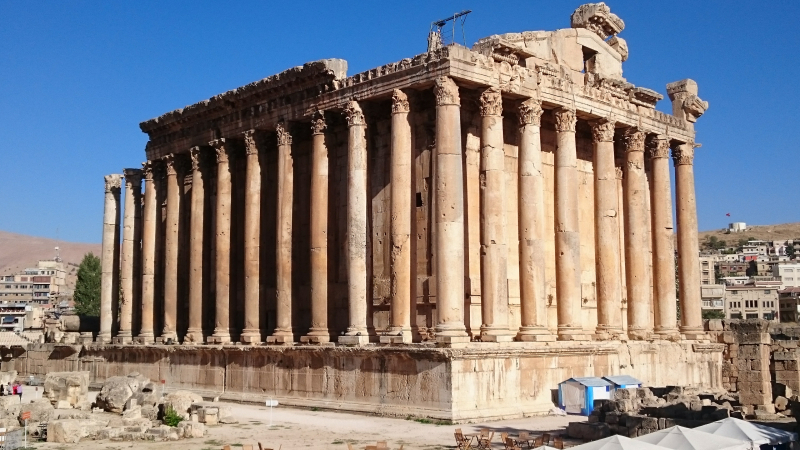
Photo: wikipedia 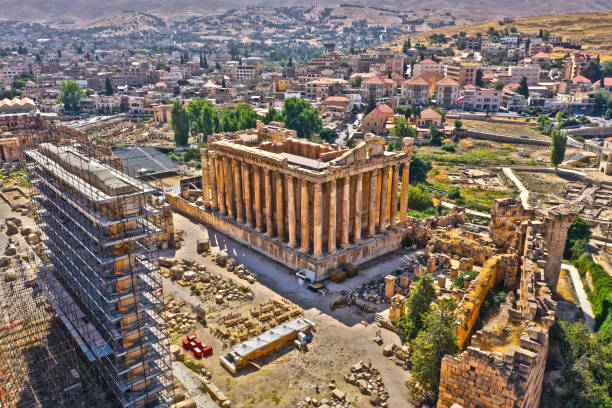
Photo: istock -
Lebanon's Byblos (Arabic: 'Jbail') is one of the world's oldest continually inhabited towns, as evidenced by the ruins' incredibly different ages. Byblos began as a Neolithic village of fishermen, probably around the 5th millennium BC. This old and prehistoric town is now a UNESCO World Heritage Site. This town certainly is one of the most beautiful historical sites in Lebanon, with the sight as stunning as a painting
Over time, Byblos would become a Phoenician commerce center known as Gublu, be conquered by Alexander the Great in 333 BC, ruled by the Greeks (whence its current name), and finally fall to Pompey in the 1st century BC, becoming a Roman city. The city gained an outstanding theater in the third century.
After the Byzantines conquered Byblos in 399 AD, the city began to collapse. By the 12th century, Byblos had been included into the Crusader state of Tripoli, which was linked to Jerusalem. Saladin captured the town in 1187 and ceded it to the Mamluks, making it part of the Ottoman Empire from 1516 until 1918.
All of these civilizations have left their imprint on Byblos today. A royal Phoenician necropolis and Roman sites such as a theater, a road, and a nymphaeum coexist with Stone Age, Chalcolithic, and Early Bronze Age homes. There's also a Crusader Castle from the 12th century, which serves as a reminder of Byblos' conquest in 1104.In addition to its interesting remains, Byblos is a UNESCO World Heritage Site for its contribution to contemporary language, which is linked to the development of the ancestor to our alphabet by the Phoenicians. There's a lot to see in Byblos, some of it in the main archaeological site and some in the medieval town center.
Location: Beirut, Lebanon
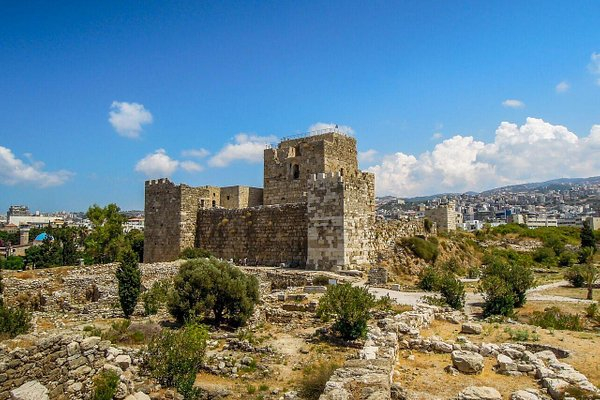
Photo: tripadvisor 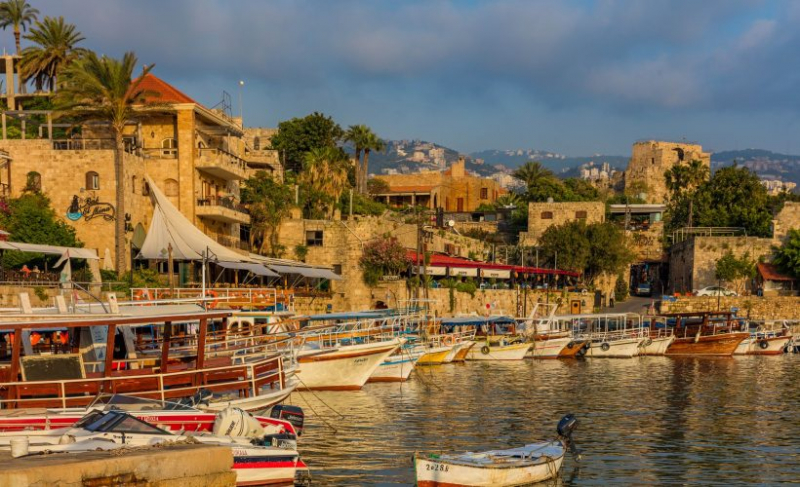
Photo: kawa-news -
Anjar was the capital of the Umayyad Islamic dynasty in Lebanon, founded by Caliph Walid I in the early eighth century. Anjar's location at the crossroads of key trade routes helped it to grow into a commercial center throughout the course of this century.
Anjar was destroyed and abandoned following a defeat in the eighth century. Nonetheless, it is Anjar's brief history that makes it such a significant place. Every detail of what is left – the meticulously planned layout, the massive arches and colonnades of the palaces that previously stood there – can be traced back to the Umayyad period.
Anjar, founded by Caliph Walid Ibn Abd Al-Malak, was a bustling trading center at the crossroads of two significant trade routes: one connecting Beirut and Damascus, and the other crossing the Bekaa and connecting Homs and Tiberias.
Anjar's prosperity, however, came to an end in 744 AD when Walid's son, Caliph Ibrahim, was defeated, and the city was demolished and abandoned, leaving only the shadow of an 8th-century city to be discovered centuries later.
Only in the 1940s were the ruins of Anjar discovered, exhibiting defensive city walls peppered with 40 towers around a rigid urban design. The remains comprised monuments and freestanding arched columns that were once part of the three-leveled Umayyad palace.Anjar is now a UNESCO World Heritage Site for its outstanding example of Umayyad architecture, and it is open to the public. Anjar is a place worth spending a few hours strolling around, reading the educational signs that guide you through the city's history along the main streets that separate the residential section from the palace and 'hamams' baths.
Location: Kachchh district, Lebanon
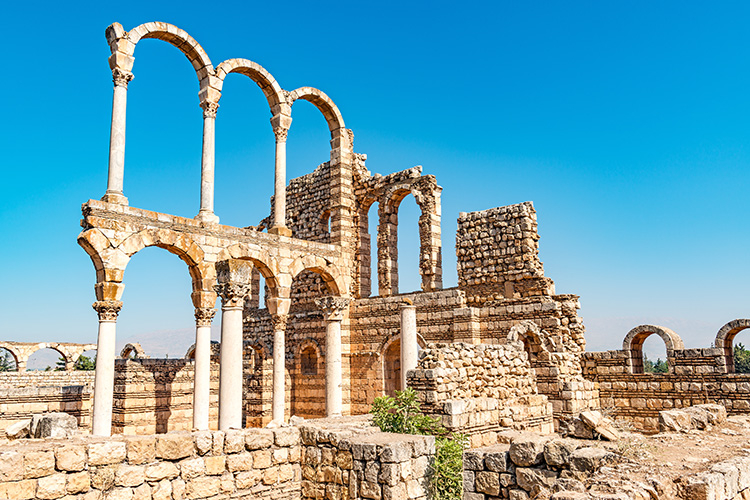
Photo: historyhit 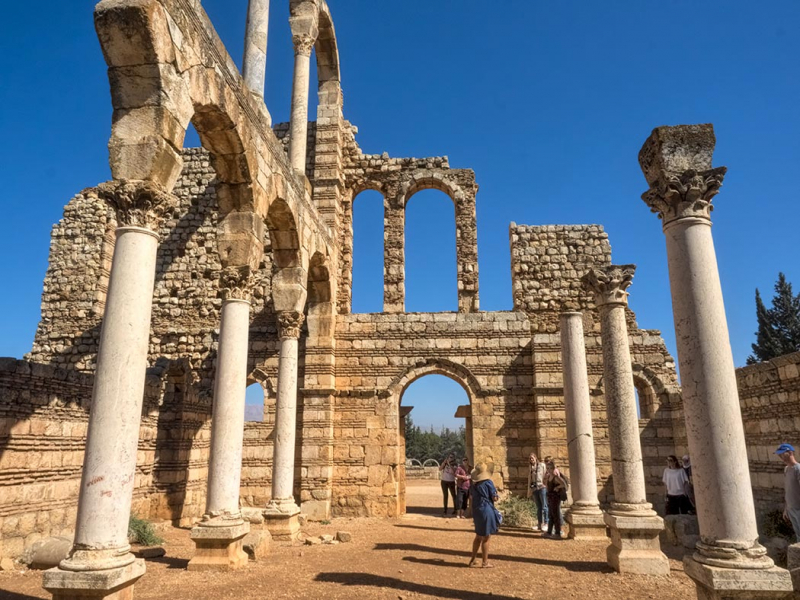
Photo: holeinthedonut -
The Sea Castle of Sidon, once a Crusader fort in the thirteenth century, is now a scenic ruin and renowned tourist site in Sidon, Lebanon. The Mamluks largely destroyed the crusader construction, although it was eventually reconstructed in the 17th century. The location now allows visitors to explore the inner courtyard as well as the impressive towers.
Sidon is a city on Lebanon's Mediterranean coast that has been of significant religious, political, and commercial importance throughout its history, which goes back to 4000 BC.
The Crusader Knights of St John of Hospital and Jerusalem erected Sidon Sea Castle in 1228 AD. It was built on a small island in the Port of Sidon and served as a holy land stronghold, with a narrow 80-meter-long roadway connecting it to the mainland.
The castle is made up of two towers that are joined by a wall. Roman columns were employed as horizontal reinforcements in the outside walls, which is frequent in fortifications built on or around former Roman sites. There's also a vast vaulted room with rusting cannonballs and ancient carved capitals.
Since both war and Mamluk destruction have left the castle in a state of half-ruin, and despite efforts to rebuild it in the 17th century, what remains today is sparse compared to the grandeur that Sidon Sea Castle would have once commanded, old illustrations of the castle reveal the true beauty of the once significant building.
It's conceivable that the Phoenician King's palace and several other Phoenician monuments were destroyed by Esarhaddon and natural earthquakes on the island on which the fortress was built. The castle has also protected the city from attacks from within.
Visitors may now take a tour of the castle for roughly £3 per person. It is advised that guests have a tour of the castle. The castle offers stunning views of Sidon and the sea, and the numerous little restaurants around cater to both the eyes and the stomachs of guests.
Location: Sidon, Lebanon.
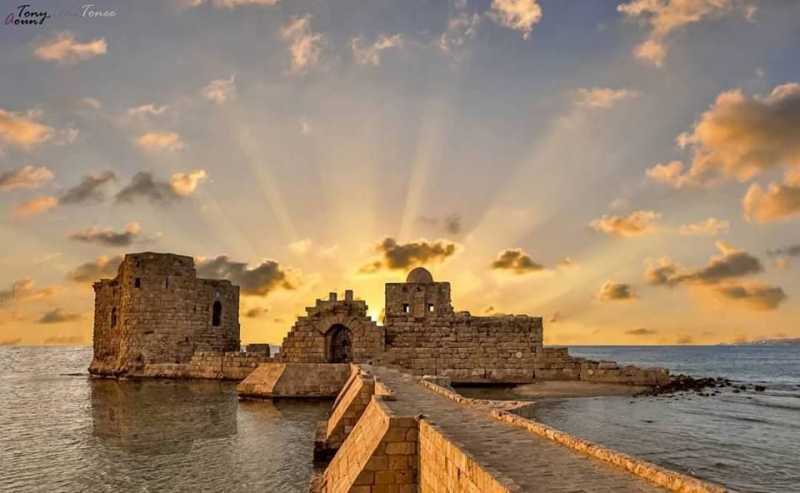
Photo: pinterest 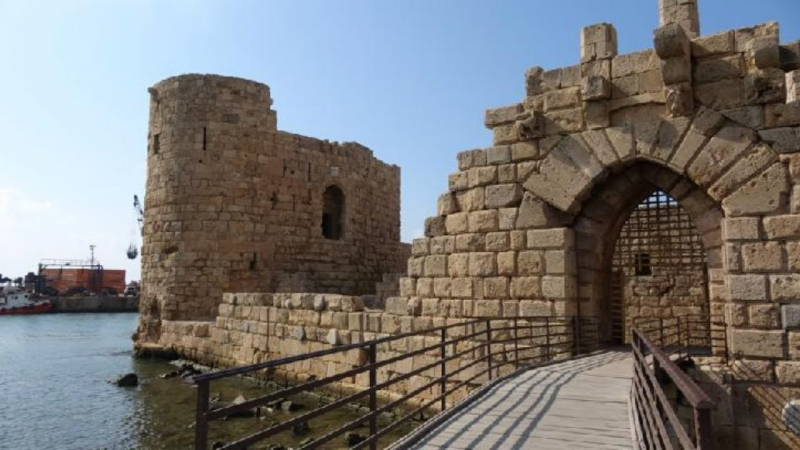
Photo: youtube -
Beiteddine Palace is a stunning 19th century treasure set high in the Chouf Mountains among stunning terraced gardens and orchards. Today, it is considered one of the most beautiful historical sites in Lebanon.
The palace was designed by an Italian architect and constructed over a 30-year period between 1788 and 1818. It was built for Emir Bashir Chehab II, the Ottoman-appointed governor of the province. Its name means 'House of Faith,' and its architecture is a blend of Arabic and Italian baroque elements.
The palace was utilized for local administration during the French mandate, and it was proclaimed a historic monument after 1930. It has been Lebanon's summer palace since 1943, when the country's first post-independence president designated it so.
The palace was severely destroyed during the Israeli invasion, with up to 90% of its contents being lost. It was claimed by the Druze militia after the battle finished, and it was returned to the government in 1999.
Much of the palace has been repaired in recent years. The stables, which once housed 600 horses and 500 foot troops and today house an enormous collection of Byzantine mosaics, are a highlight.
Location: Beiteddine, Lebanon
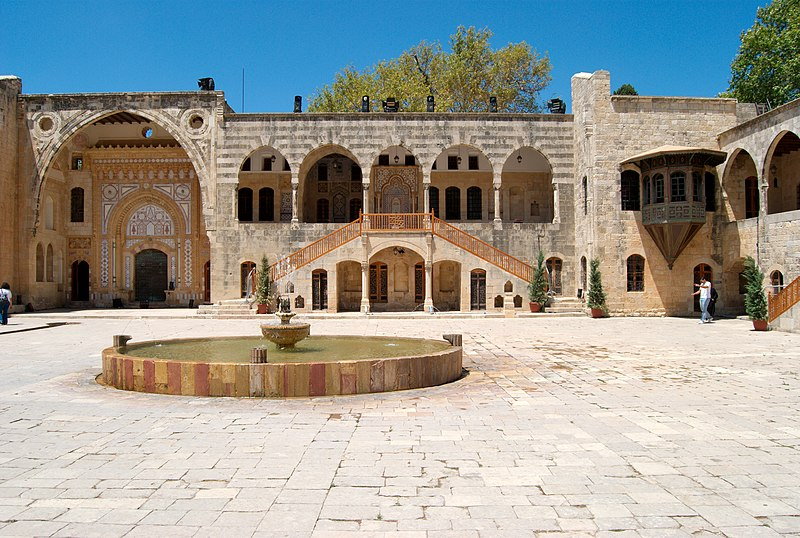
Photo: wikipedia 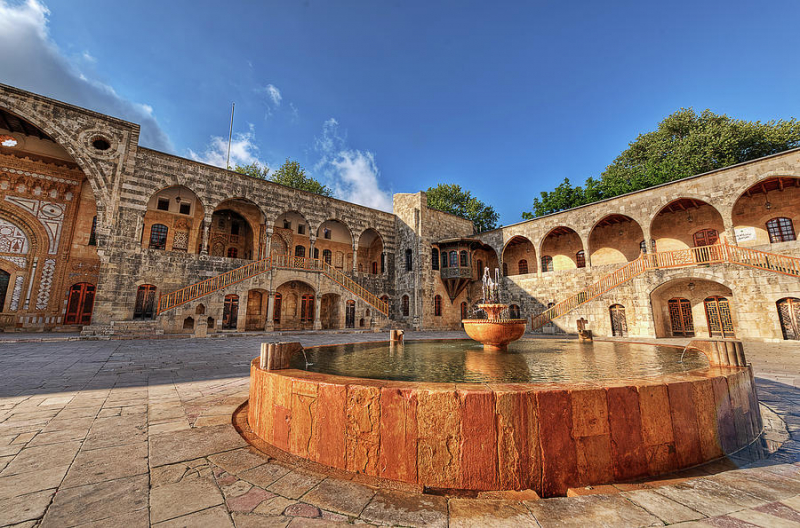
Photo: photos.com


























